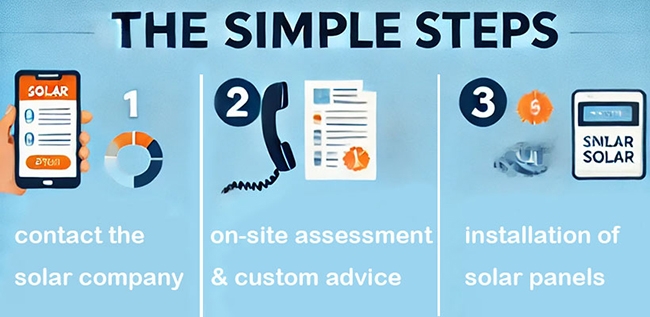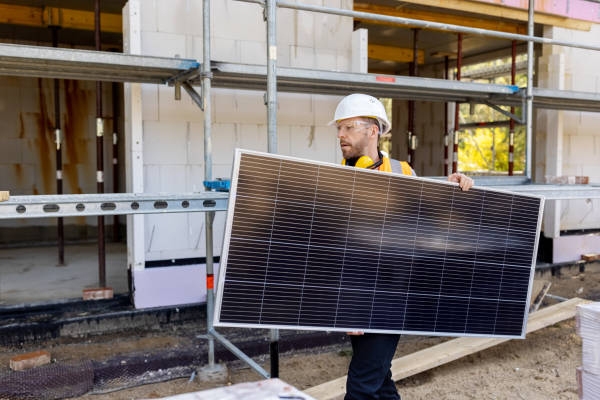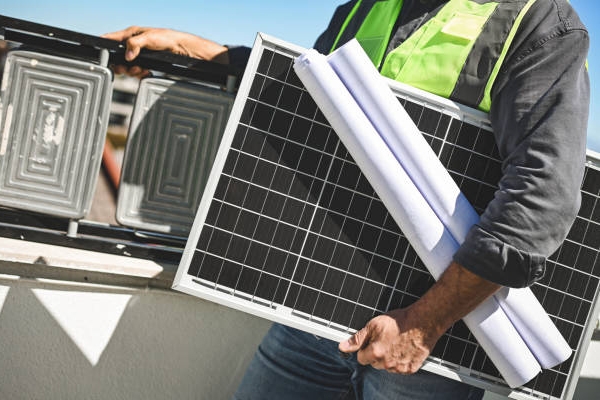Solar installations have become increasingly popular in recent years, not only because they are a sustainable energy solution, but also because of the significant financial benefits they can bring to a home. However, many people are often confused and hesitant when considering whether or not to install solar panels. powerhome store aims to provide you with detailed information that will help you understand if a solar installation is right for your home. We will help you make an informed decision by detailing the steps involved in a solar installation, what to look out for, and the many benefits it brings.
As the global problem of climate change intensifies and traditional energy prices continue to rise, more and more households are turning to solar energy as a clean source of energy. Not only does solar energy significantly lower electricity bills, it also increases property values and reduces dependence on utility companies. However, solar installation is not for all homes. Before deciding whether or not to install solar panels, it's crucial to understand the entire installation process and the do's and don'ts associated with it. Read on to learn how to start your solar journey in three simple steps and explore the key points to keep in mind during the process.
3 Simple Steps to Installing Solar Panels

Step 1: Contact the Solar Company
Simply fill out the form or call the solar company, they will not share your information. When you talk to the solar company, they will determine if you and your home are eligible for solar panel installation. Before they begin installing solar panels, they will need to determine items such as home ownership, shading, and utility information. If you qualify, they will schedule a convenient time for you to meet with a consultant from that solar company at your home.
Step 2: On-Site Evaluation and Customized Recommendations
A consultant from this company will further evaluate your roof and shading situation in person. At this time, they will also analyze your current electric bill and determine the right size solar system for you. Your consultant will customize a proposal for you on the spot based entirely on your criteria. All that's required is your signature, and the professional company will do the rest.
Step 3: Install the Solar Panels
Next, they will call you to schedule an installation date. Solar panels for houses are quick and easy to install and usually only take one to two days. At this point, their job is done. Shortly thereafter, your utility will come and switch out the meter. Yes, you'll get a new fancy, reverse-rotating meter! Then BANG! ...... They flip the switch and you save money!
What Do I Need to Know When Installing Solar Panels?
While there may be some differences in your area, here's a rundown of the solar system installation process. Some cities and states have made solar power faster and easier by streamlining the permitting process. Typically, the process involves a few steps and visits along the way. However, the actual solar panel installation process usually only takes a day or two. Most of the time it takes to get a solar power system up and running is the time required for permit approval, homeowners' association approval (if applicable), final inspection, and installation of a net meter. Regional differences will make your individual solar panel installation time vary, but the following steps will give you a general idea of how long it will take.

- On-site Audit: During the consultation process, an on-site energy consultant will take photos of your roof, attic space, electrical panel and meter in preparation for installation. Shortly after you sign your solar contract, a structural engineer will assess your home's roof to determine if it can support solar panels and the associated racking system. After that, the appropriate design team will take over to determine the location and configuration of the solar panels. For ground-mounted solar systems, the process is similar but does not require the approval of a structural engineer. The client will approve all designs in preparation for the next step.
- Permitting Process: Our solar staff will take care of most, if not all, of the paperwork and permits needed to install your solar panel system. You will be required to sign, but they will submit the paperwork to the appropriate local agencies and utility companies for approval. This process can take a few days, a week, or a few months, depending on where you live. Some towns and cities have taken extra steps to make the approval process faster and easier. These areas are known as "solar-friendly communities" or "smart communities" where solar panel installations can be permitted quickly.
- Preparing the Job Site: First, the installer will locate the electrical panel and attic access for your home and set up the work area. They may move some equipment or furniture to clear access to the necessary work area. They will also take steps to protect the floor of the temporary work area. Their first priority is to prevent damage to your home and personal belongings during the solar installation process. They will then build scaffolding and/or ladders to gain access to the roof. City codes often require the use of safety harnesses to ensure the safety of the solar installation team.
- Installing the Solar Panels: The installation team will arrive on-site on a scheduled date to install the solar panels. Since solar panel installation is not a one-person job, you will have a team (typically three to four crew members) to help with the installation. After reviewing your site plan and installation specifications, they will unload and inspect the solar panels and any electrical equipment to make sure nothing is damaged in transit.
- Starting the Solar Panel Installation: The installer will install the metal rails needed to mount the solar panels on your roof. These rails are secured to the structure with special mounting bolts or screws that provide a solid foundation for the solar panels. Although these screws will penetrate the roof, there is nothing to worry about. As part of the installation, the installer will take care to seal any applicable holes.
While the solar panels are being installed on the roof, other crews will begin installing the electrical components of the system. These include the inverter that converts the DC power produced by the solar system into the AC power needed to power the home. They will also install the conduit and wiring needed to connect the panels to the home's electrical system.
System Panel Installation
The final step in the solar panel installation is to mount the panels to the roof and then connect them to the main electrical distribution panel. The crew will move the panels to the roof and secure them to the metal rails that were previously installed. They then connect the electrical conduit from the switchboard and inverter to the panels. Testing and final adjustments are then made to ensure the system is working properly.
The Final Step in Solar Panel System Installation
Once the installation is complete, the installer performs a final check of the installed equipment, including the mounting hardware, to make sure everything is installed correctly. This also includes verifying that all roof penetrations have been properly sealed to maintain the integrity of the roof. The installation team will close all service panels and attic access and return furniture to its place. They will also remove any tools, ladders, ropes and debris created during the installation process.

Interconnecting the Solar Panel System
Over the next few weeks, the local building department will complete a final inspection to confirm that the solar system was installed correctly. Once your system passes the inspection, the utility company will arrange for you to install a grid meter and connect the solar system to the utility company's main power grid.
With the details in this article, you have learned the basic steps and considerations for installing solar panels. Whether it's lowering your electric bill, having your own power, utilizing net metering, or increasing the value of your property, solar panels can provide you with many benefits. With current rising energy prices and environmental pressures, choosing solar energy is not only an environmentally friendly move, it's a smart financial investment. If you are considering installing solar panels, you may want to act now and enjoy the many benefits of solar energy. Hopefully, this guide will help you better understand the solar installation process and encourage you to take the first step toward using clean energy.
(1).png)
(1).png)